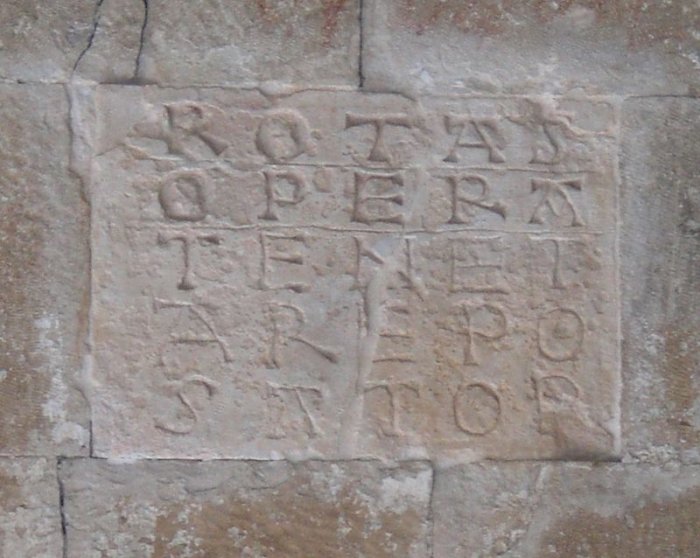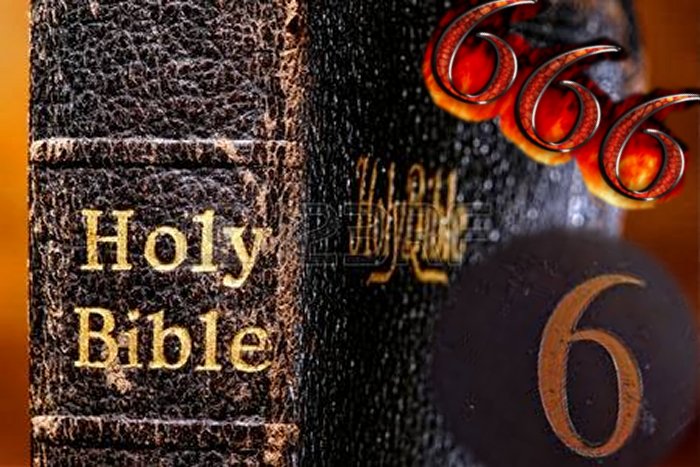Sator Square: Mysterious Ancient Magical Word Puzzle Remains Unsolved
Ellen Lloyd - AncientPages.com - The Sator Square is an ancient magical word puzzle that fascinates historians and scientists. It was first discovered at the end of the nineteenth century in the ruins of Pompeii in southern Italy.
Experts cannot determine whether the people who invented this enigmatic square 2D palindrome were Christians, Jews, or perhaps Pagans.
A Sator Square on a brick wall in St. Peter ad Oratorium. Credit: Wikipedia
Like many other magical squares, the Sator square uses letters instead of numbers. The square contains a five-word Latin palindrome:
S A T O R
A R E P O
T E N E T
O P E R A
R O T A S
The text can be read top-to-bottom, bottom-to-top, left-to-right, or right-to-left; and it may be rotated 180 degrees and still be read in all those ways.
It has been suggested that Sator Square was used as a protection symbol against evil forces, like the Hamsa or the Nazar amulets that protect against the Evil Eye.
Is the Sator Square really of Christian origin? According to Nicolas Vinel, Doctor in Greek Studies, University of Clermont-Ferrand, France "the Christian hypothesis was disputed by those who considered it improbable that Christians had created such a cryptogram at the time and even that a Christian community had ever existed in Pompeii. The Jewish hypothesis was then considered because there were already several important indications of a Jewish presence in the city" of Pompeii.
The sentence is written in Latin: "Sator Arepo Tenet Opera Rotas" has been the subject of speculation and researchers cannot agree on its translation. One of the five words written on the square is unusual.
The word Arepo mentioned on the square appears to be the name of a person, perhaps of Egyptian origin. The most common translation of the text is: "The farmer Arepo has [as] works wheels [a plough]".
It is puzzling that similar representations of the Sator Square have been found in other parts of the world. For example, in Närke and Gotland in Sweden, this phrase has been discovered on rune stones.
On the runes, we find the phrase "sator arepo tenet". Obviously, knowledge of the palindrome spread across the world, and the meaning of this mysterious word puzzle must have been important to our ancestors. The Sator Square has also been found in Syria, France, Portugal, the United Kingdom, and other places in Italy.
Credit: Public Domain
Some people have attributed magical properties to the Sator Square, but its origin remains unknown. Vinel points out that "in the field of ancient mathematics on the subject of squares, today referred to as "magic.", these were known before the Christian era in China and several centuries later in India, but they had been believed to have been absent from the Greco-Roman tradition until the fourteenth century when a Byzantine opuscule explicitly treated the subject."
The problem with the words written on the square is that we encounter them in various ancient sources. For example, the shepherds of the Nativity story are called Sator, Arepon and Teneton. A Byzantine Bible of an earlier period conjures out of the square the baptismal names of the three Magi, Ator, Sator, and Peratoras. This suggests that Sator Square is closely linked to Christianity, but there are those who disagree, because, as previously mentioned Pompeii did not have a large Christian community.
Read about the meaning of number 6.
It has also been speculated that the Sator Square is full of secret codes. Hoping to shed more light on this mysterious ancient palindrome, many have tried to decipher these codes, and some curious discoveries have been made.
For example, when the letters are translated into Greek and assigned numbers from the word Tenet, we get the number 666, the Number of the Beast in the Bible. As previously mentioned on Ancient Pages, number 6 has symbolic significance in ancient cultures.
The true meaning of the Sator Square remains a mystery, but it has been an important palindrome because it was used on doors in many European countries during the Middle Ages.
Updated on March 6, 2022
Written by Ellen Lloyd – AncientPages.com
Copyright © AncientPages.com All rights reserved. This material may not be published, broadcast, rewritten or redistributed in whole or part without the express written permission of AncientPages.com
More From Ancient Pages
-
 Beautiful Ancient City Of Polonnaruwa With Hundred Of Tombs, Temples And Statues
Civilizations | Nov 12, 2018
Beautiful Ancient City Of Polonnaruwa With Hundred Of Tombs, Temples And Statues
Civilizations | Nov 12, 2018 -
 Homo Erectus Was Too Lazy And Went Extinct
Archaeology | Aug 14, 2018
Homo Erectus Was Too Lazy And Went Extinct
Archaeology | Aug 14, 2018 -
 Discovered Roman Malting Oven Could Be Evidence Of 2,000-Year-Old Beer Production In The UK
Archaeology | Apr 4, 2022
Discovered Roman Malting Oven Could Be Evidence Of 2,000-Year-Old Beer Production In The UK
Archaeology | Apr 4, 2022 -
 Scientists Attempt To Solve An Ancient Greek Volcano Mystery
Archaeology | Sep 20, 2022
Scientists Attempt To Solve An Ancient Greek Volcano Mystery
Archaeology | Sep 20, 2022 -
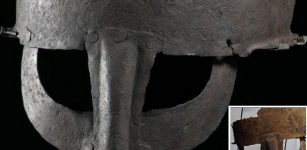 Why Is The Yarm Viking Helmet Special?
Archaeology | Aug 10, 2020
Why Is The Yarm Viking Helmet Special?
Archaeology | Aug 10, 2020 -
 Durendal – Magical Sword Of Knight Roland That Cut Stone Boulders With A Single Strike
Featured Stories | Jan 19, 2022
Durendal – Magical Sword Of Knight Roland That Cut Stone Boulders With A Single Strike
Featured Stories | Jan 19, 2022 -
 Ravana: Ten-Headed And Multi-Armed Demon King Of Lanka And Chief Antagonist In Epic Ramayana
Featured Stories | Oct 8, 2019
Ravana: Ten-Headed And Multi-Armed Demon King Of Lanka And Chief Antagonist In Epic Ramayana
Featured Stories | Oct 8, 2019 -
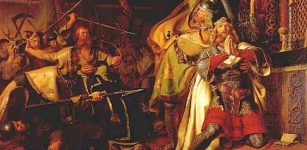 Thousand-Year-Old Sarcophagus Discovered In Odense
News | Sep 28, 2015
Thousand-Year-Old Sarcophagus Discovered In Odense
News | Sep 28, 2015 -
 Viking Treasures Discovered In Chamber Grave In Denmark
Archaeology | Apr 4, 2014
Viking Treasures Discovered In Chamber Grave In Denmark
Archaeology | Apr 4, 2014 -
 On This Day In History: Henry IV Is Crowned King Of France – On Feb 27, 1595
News | Feb 27, 2017
On This Day In History: Henry IV Is Crowned King Of France – On Feb 27, 1595
News | Feb 27, 2017 -
 Elusive Non-Binary Gender In Prehistoric Europe – A Forgotten Minority
Archaeology | May 26, 2023
Elusive Non-Binary Gender In Prehistoric Europe – A Forgotten Minority
Archaeology | May 26, 2023 -
 Five Rare Bronze Age Axe Heads Found In Polish Forest
Archaeology | Dec 8, 2023
Five Rare Bronze Age Axe Heads Found In Polish Forest
Archaeology | Dec 8, 2023 -
 Spectacular Vespasianus Titus Tunnel – An Ancient Roman Engineering Marvel
Ancient Technology | Aug 30, 2018
Spectacular Vespasianus Titus Tunnel – An Ancient Roman Engineering Marvel
Ancient Technology | Aug 30, 2018 -
 Mysterious Ancient Remains Of The Lady In The Well – An Archaeological Detective Story
Archaeology | Sep 11, 2020
Mysterious Ancient Remains Of The Lady In The Well – An Archaeological Detective Story
Archaeology | Sep 11, 2020 -
 Number 13: Coincidence Or Bad Luck – Are We Still Superstitious?
Featured Stories | Dec 9, 2020
Number 13: Coincidence Or Bad Luck – Are We Still Superstitious?
Featured Stories | Dec 9, 2020 -
 Mysterious Ancestor Of All Mammals Identified Through Genome Reconstruction
Archaeology | Sep 30, 2022
Mysterious Ancestor Of All Mammals Identified Through Genome Reconstruction
Archaeology | Sep 30, 2022 -
 Is This The Earliest Evidence Of First Human Language?
Archaeology | Mar 12, 2018
Is This The Earliest Evidence Of First Human Language?
Archaeology | Mar 12, 2018 -
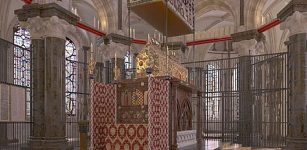 Stunning CGI Reconstruction Of Saint Thomas Becket’s Shrine
Archaeology | Jul 7, 2020
Stunning CGI Reconstruction Of Saint Thomas Becket’s Shrine
Archaeology | Jul 7, 2020 -
 Afterlife: Ancient Egyptian Mummification Balms Studied
Archaeology | Aug 31, 2023
Afterlife: Ancient Egyptian Mummification Balms Studied
Archaeology | Aug 31, 2023 -
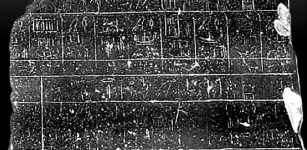 Palermo Stone: One Of The Earliest History Records Of Ancient Egypt
Artifacts | Apr 15, 2016
Palermo Stone: One Of The Earliest History Records Of Ancient Egypt
Artifacts | Apr 15, 2016

